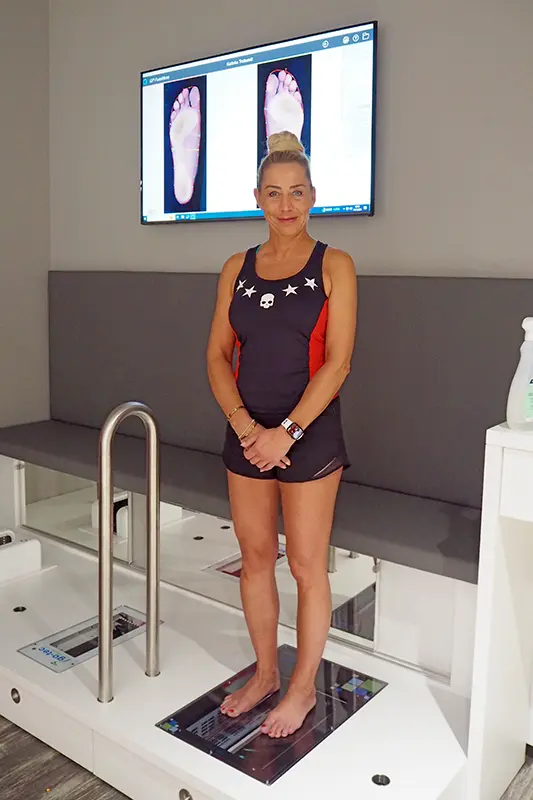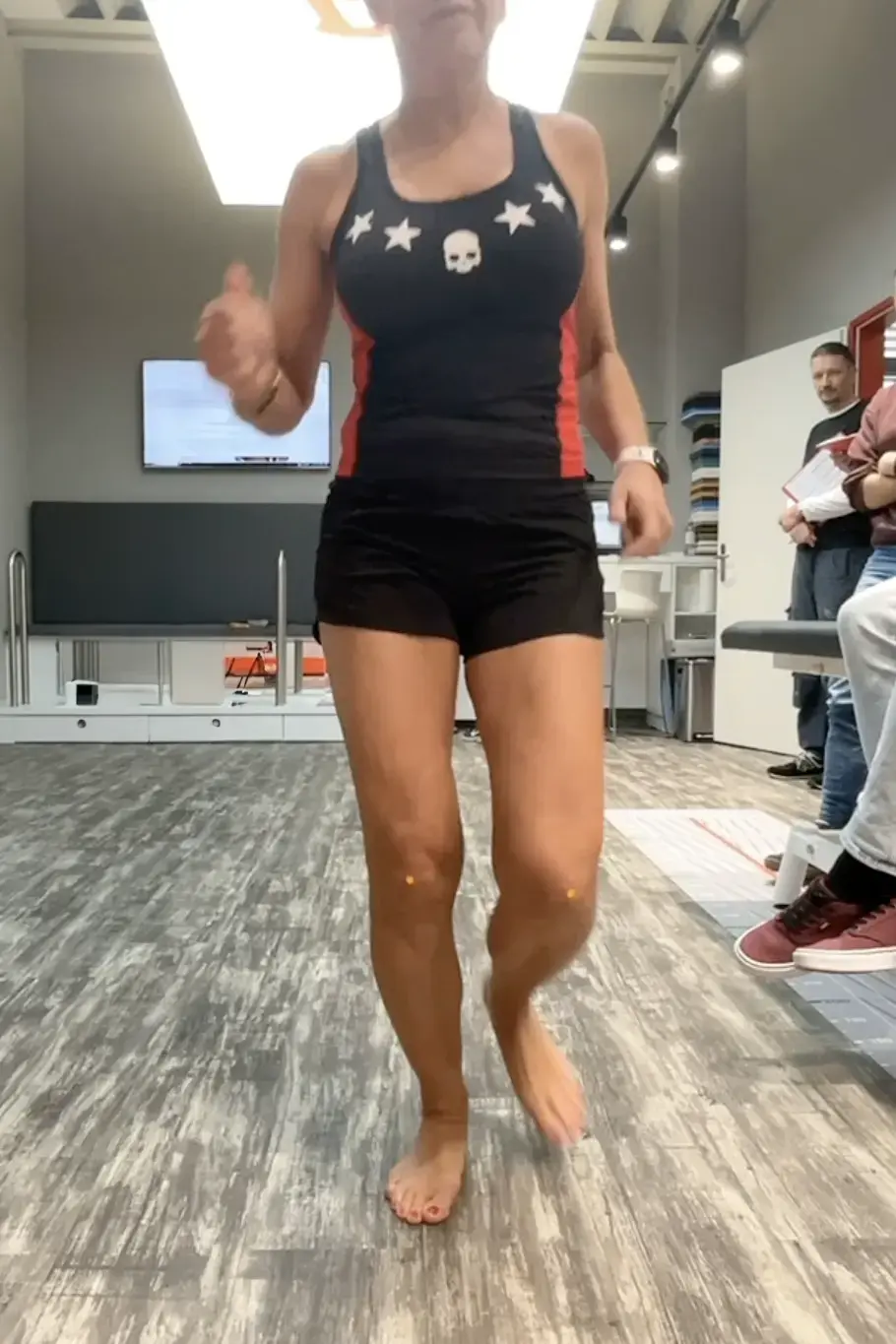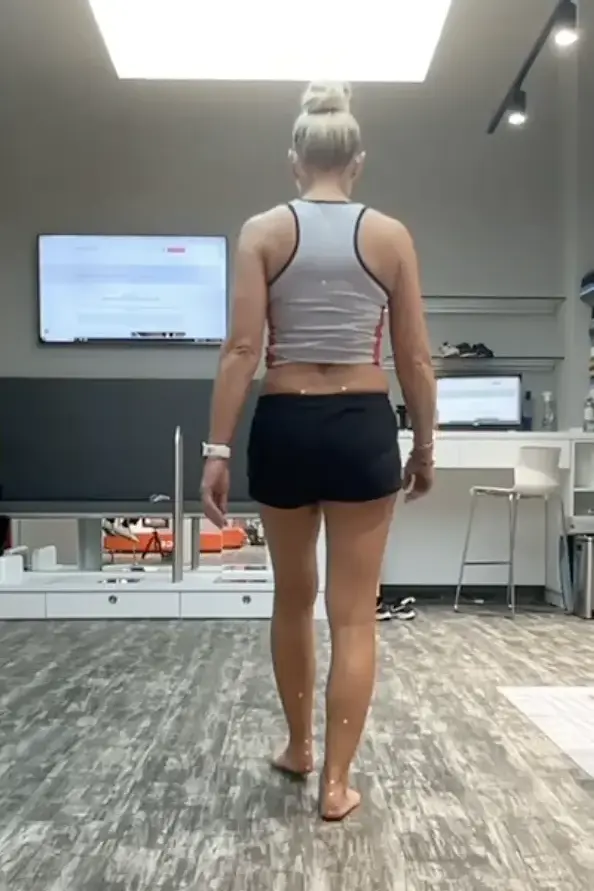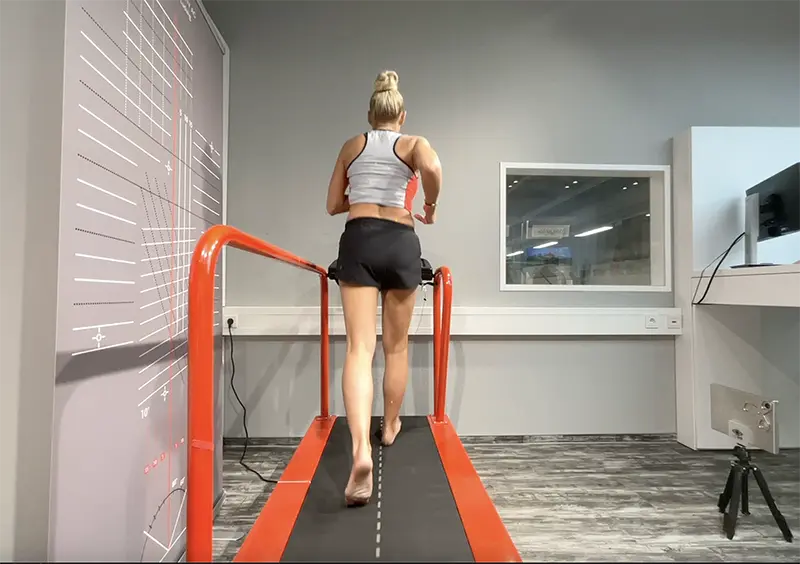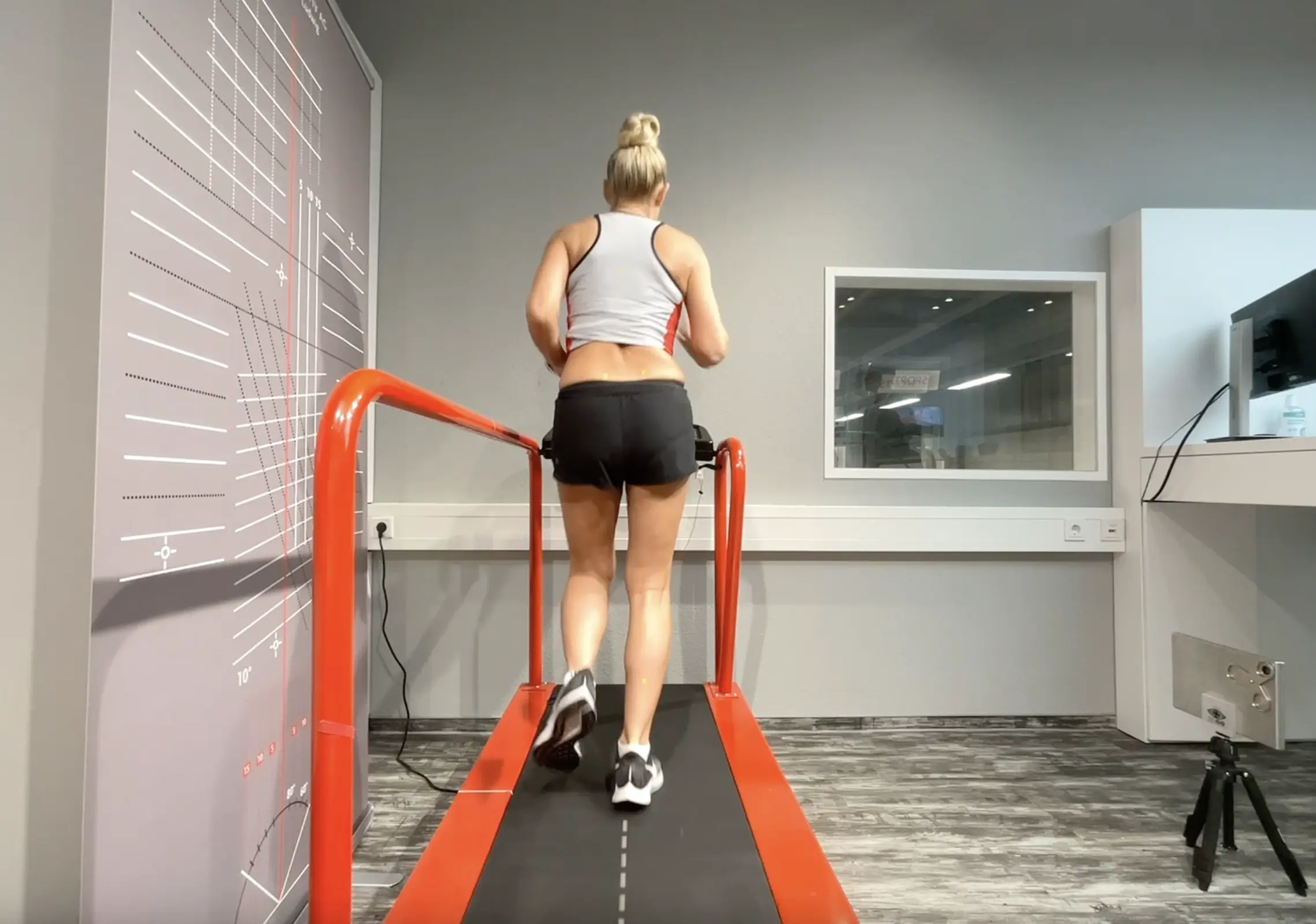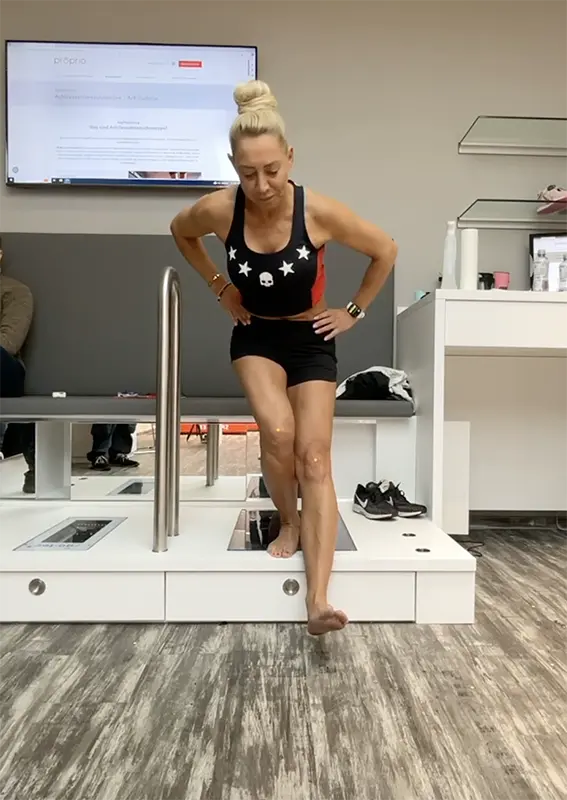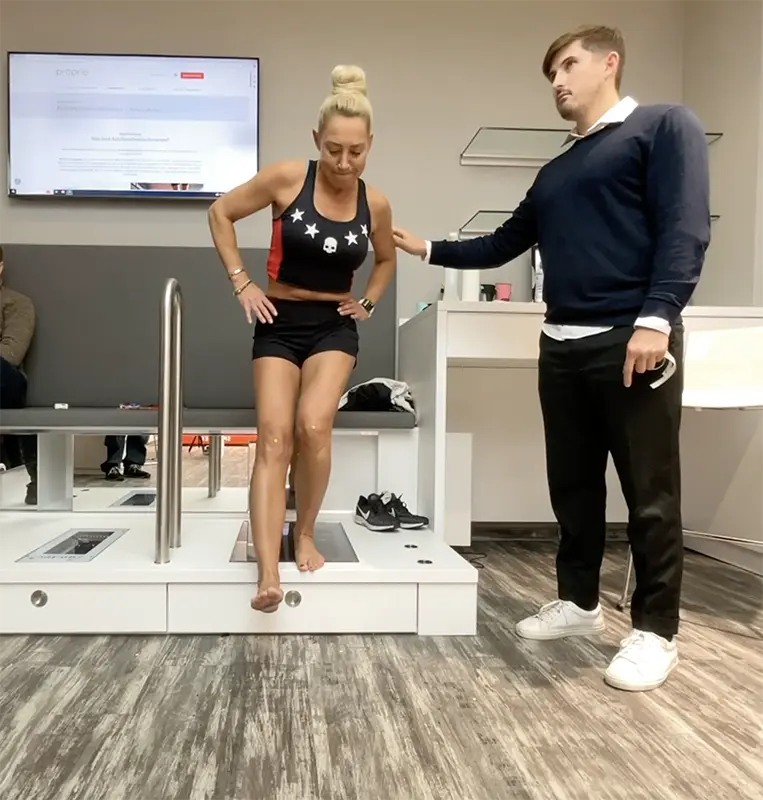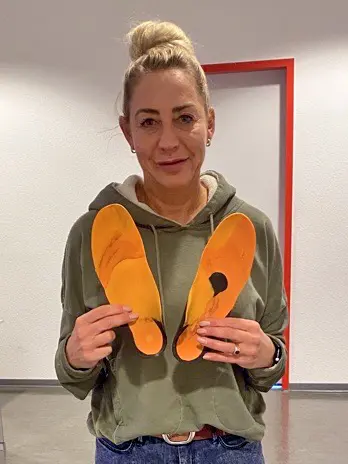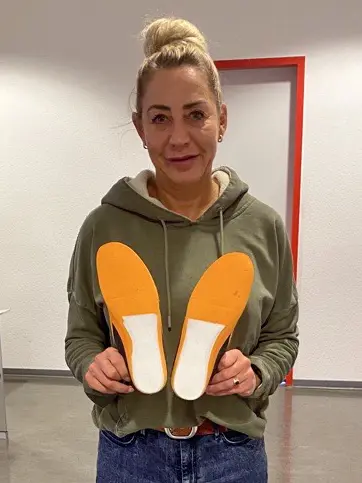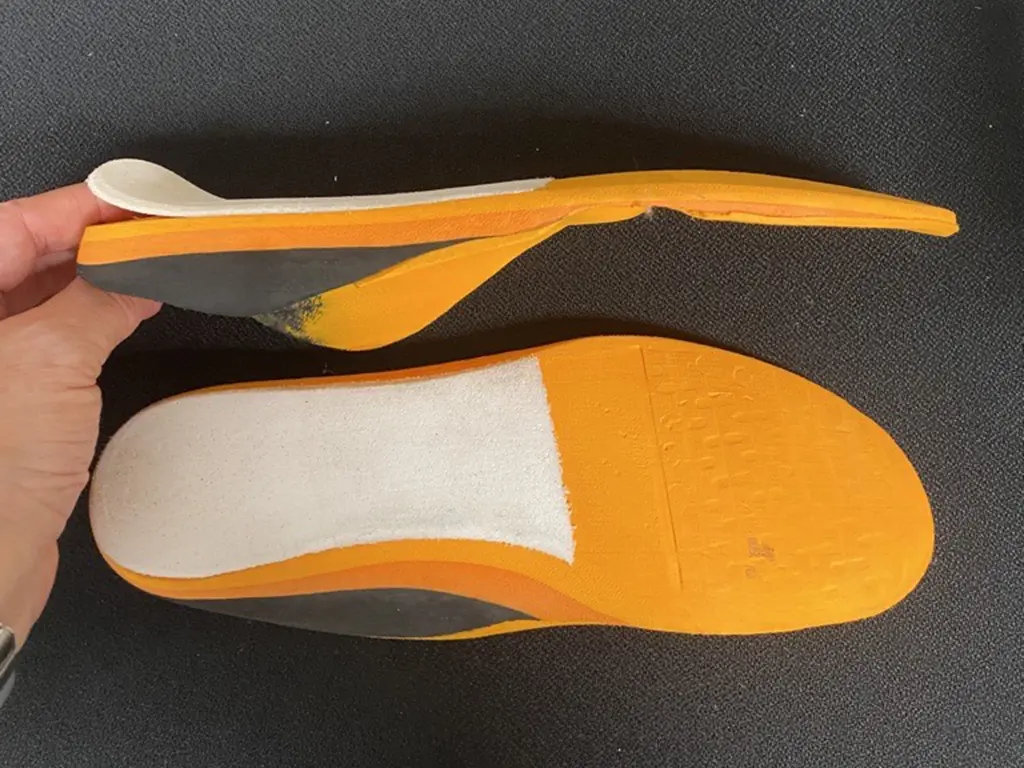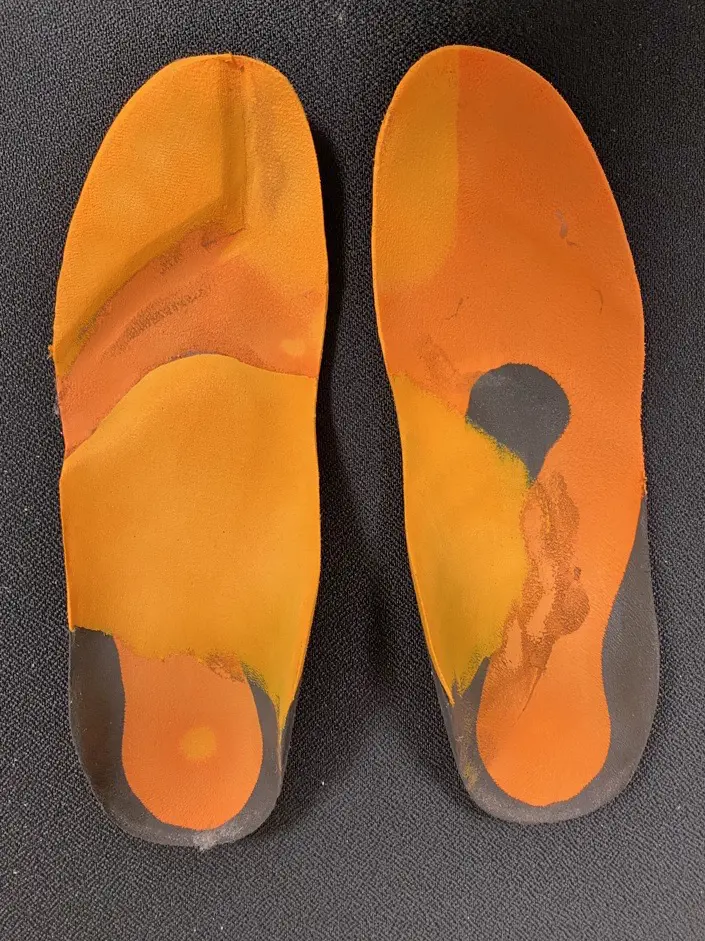From analysis to peak performance.
Case study: Sensorimotor insoles after an Achilles tendon injury.
Not only our customers are analysed at the highest level, but also our employees. Find out how Katinka, our charming and tennis-loving employee from the back office, uses our sensorimotor insoles is back at full speed after an Achilles tendon injury. An insight into her personal success story and the professional support from our speakers!
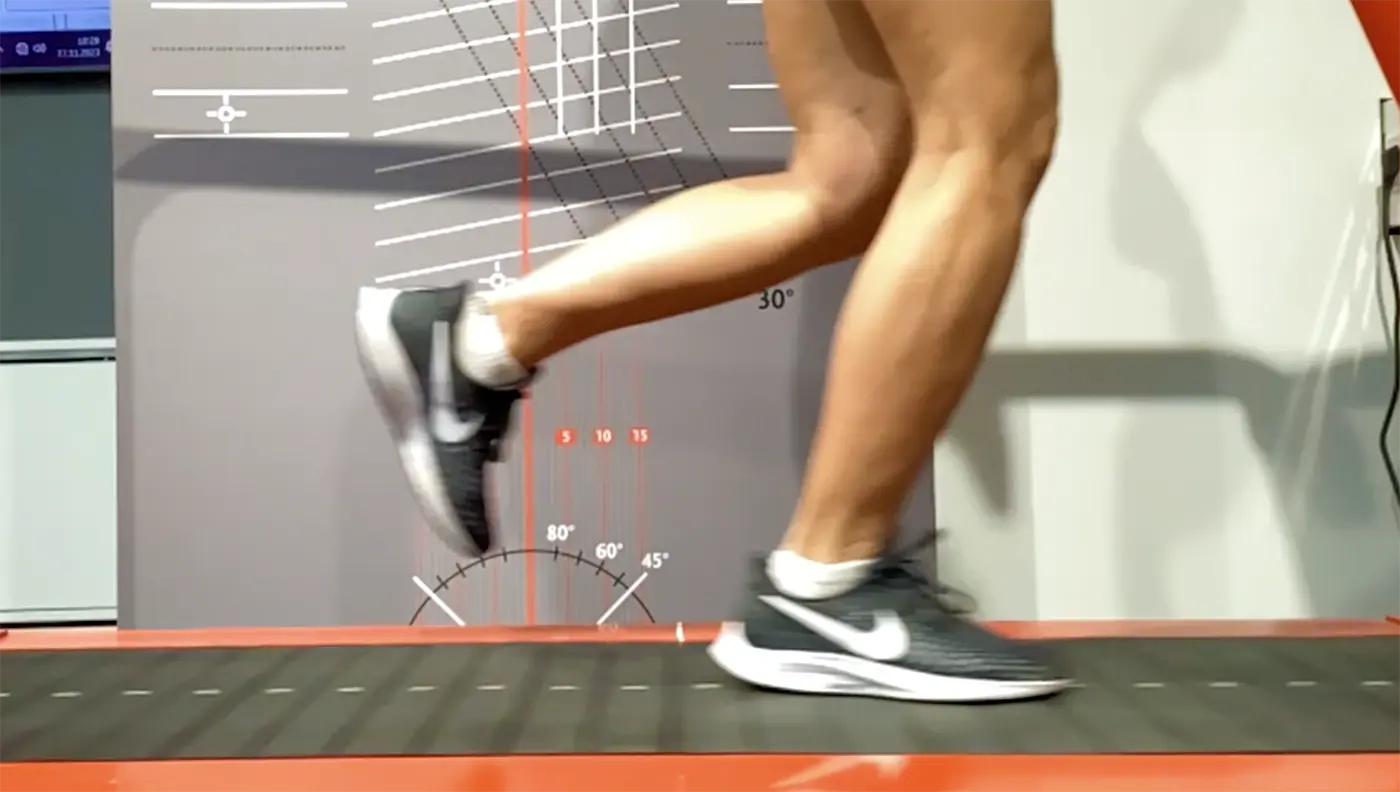
As a long-standing and ambitious tennis player who plays 5 sessions a week, Katinka prioritises performance not only at work but also in her free time. However, the after-effects of a partial rupture of the Achilles tendon significantly impaired her sporting activities. After traditional treatment with a relief shoe and physiotherapy, she wanted to get back on track as quickly as possible. However, persistent discomfort in the area of the Achilles tendon insertion and a plantar cramp sensation during exertion continue to hinder her. She is currently doing a maximum of one session a week, focussing on technique training. She is not yet able to play freely.
Analysis and diagnosis of Achilles tendon injuries
Our instructors carried out a comprehensive movement analysis, which included palpation of the foot and the affected structures as well as a gait, running and sport-specific 2D camera-assisted examination. The supplementary functional testing focussed on the structures of the ankle and knee joints.
Palpation revealed free mobility of the lower ankle joint and tarsus. However, lateral differences in the dorsiflexion ability of the ankle joint were immediately apparent (15 degrees left vs. 30 degrees right). Despite the presence of splayfoot and hallux valgus, toe mobility was fully normal. The initial assessment of the gait pattern showed a stable hindfoot axis in the weight-bearing phases as well as limited USG pronation with an already statically present flat foot.
Results of the functional test:
As part of the functional testing, a knee-to-wall test was carried out to check mobility in the ankle joint and plantar flexors. Lateral differences of > 3 cm were still evident here. Further improvement of the basic mobility by means of mobilisation, stretching and fascia training was nevertheless recommended. A step-down test revealed instabilities of the knee axis, which were also more apparent on the affected side in the frontal plane. A posture analysis and pelvic examination did not reveal any static pelvic obliquity. A shortening of the hip flexors and weak hip abductors according to the Trendelenburg and single-leg squat tests were used as a reason for training recommendations.
Sensorimotor insoles and successes:
Our speaker and OSM master Stefan Woltring created a customised Sensorimotor insertwhich combined all the information and was worn by Katinka in everyday shoes and footwear. The focus was on stabilising the hindfoot axis while simultaneously detonating the left plantar flexors of the OSG. The retrocapital and toe bridge were intensified on the left in a side-by-side comparison.
After 4 weeks of wearing them and more than 300,000 steps, Katinka is seeing the first effects. A noticeable relief of the plantar structure prevents the foot structure from cramping during sporting activity. Katinka is now doing 2 to 3 sessions a week again without any discomfort and is continuously increasing the intensity of her tennis training.
Further information
Order proprio SOLE online (only for business customers)
Where can I get proprio SOLE? (for patients)
Find a proprio expert near you on www.proprio.info.
